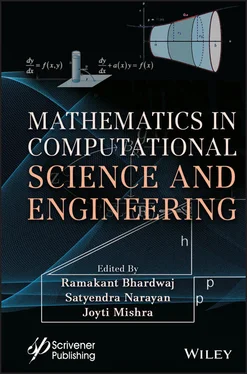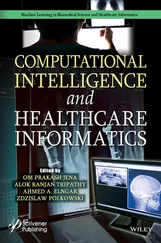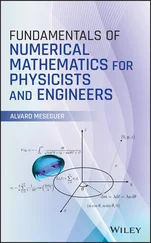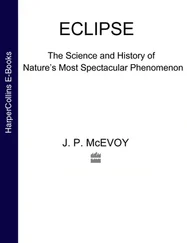9. Rudi Abdullah, Samsul Bahari Bahar, Asrianti Dja’wa, La Ode Dedi Abdullah Inventory Control Analysis Using Economic Order Quantity Method volume 436 2019.
10. A guide to Brownian motion and related stochastic processes Jim Pitman and Marc Yor, [v1] Tue, 27 Feb 01:36:17 UTC (111 KB), 2018.
11. Jörn Dunkel, Peter Hänggi, Relativistic Brownian motion, Physics Reports 471 (2009) 1–73.
12. Toshio Yanagida, Masahiro Ueda, Tsutomu Murata, Seiji Esaki a, Yoshiharu Ishii, Brownian motion, fluctuation and life, BioSystems 88 (2007) 228–242.
13. Luczkaa J., Talknerb P., Hanggi P., Diffusion of Brownian particles governed by fluctuating friction. Physica A 278 (2000) 18–31.
14. Julien Berestycki,ÉricBrunet, Simon. Harris, Piotr Miłos, Branching Brownian motion with absorption and the all-time minimum of branching Brownian motion with drift. Journal of Functional Analysis 273 (2017) 2107-2143.
15. Huerta-Cuellar G., Jiménez-López E., Campos-Cantón., Pisarchik, A.N., An approach to generate deterministic Brownian motion, Commun Nonlinear SciNumerSimular 19(2014) 2740-2746.
16. Camella Burja, Vasile Burja, Analysis Model for Inventory Management, Annals of the University of Petrosani, Economics , 10(1), 43-50, (2010).
17. Aref Gholami and Abolfaz Mirzazadeh, An inventory model with controllable lead time and ordering cost, log-normal-distributed demand, and gamma-distributed available capacity. Cogent Business & Management 5: 1469182(2018).
18. Mehmood Khan, Mohamad Y. Jaber, Maurice Bonney, An economic order quantity (EOQ) for items with imperfect quality and inspection. Int. J. Production Economics 133(2011)113-118.
19. Christopher J. Bishop and Yuval Peres, Fractals in Probability and Analysis , 2017.
20. Mandelbrot B. B. The Fractals Geometry of Nature , Freeman, San Francisco, CA, 1982.
1 *Corresponding author: g.jayalalithamaths.sbs@velsuniv.ac.in
2
Ill-Posed Resistivity Inverse Problems and its Application to Geoengineering Solutions
Satyendra Narayan*
Department of Applied Computing, Faculty of Applied Science and Technology, Sheridan Institute of Technology and Advanced Learning, Oakville, Ontario, Canada
Abstract
The most important physical properties to study ill-posed inverse problems in physical sciences are electrical conductivity, magnetic permeability, density, wave-velocity, elasticity parameters/modulus, and dielectric permittivity. This paper attempts electrical conductivity of the earth materials and describes some innovative approaches which have been used to solve ill-posed resistivity inverse problems encountered in mapping and monitoring geo-environmental problems.
The paper begins with an overview of the present state of knowledge about electrical resistivity methods for mapping and monitoring in-situ processes that cannot be accessed directly. The current study indicates that a generalized mathematical approach has not been developed to investigate the sensitivity of resistivity measurements to changes in resistivity at depth. Therefore, the paper also presents a generalized mathematical formulation for sensitivity analysis and describes sensitivity of resistivity measurements. Reciprocity and perturbation analysis form the basis for the mathematical formulation, which has been extended further towards introducing multi-dimensional resistivity inversion useful for mapping and monitoring in-situ processes. A generalized multi-dimensional mathematical technique is described herein for computing numerical response over the one-dimensional (1-D), two-dimensional (2-D) and three-dimensional (3-D) resistivity models excited by a three-dimensional (3-D) point source. These problems also described as 1-D/3-D, 2-D/3-D and 3-D/3-D inverse problems in the scientific literature.
Keywords:Resistivity inversion, resistivity inverse problems, sensitivity of resistivity measurements, multi dimensional resistivity inversion, in-situ resistivity monitoring, design strategy for resistivity monitoring, geoenvironmental resistivity problems, geo-engineering resistivity problems, linearization of nonlinear resistivity problems
The keywords ill-posed inverse problems have been reported in the scientific literatures since the beginning of the 20 thcentury. In physics, it is reported as an inverse problems of quantum scattering theory. In geophysics, it is reported as an “ill-posed inverse problem” of electrical resistivity mapping, seismic mapping, and gravitational-potential field mapping. It has also appeared in astrophysics and other areas of science and engineering. With recent advances in mathematical computing and powerful computers over the past decades, application of inverse and ill-posed problems, its theories and the associated mathematical methods has been extended to almost every field of science and engineering. In forward numerical modelling of physical sciences, researchers attempt to formulate appropriate functions. These functions are used to describe different physical processes involving propagation of seismic waves, sound waves, electromagnetic waves, and heat waves, etc.
To understand ill-posed inverse problems thoroughly in the field of science and engineering, it is important to understand the meaning of ill-posed and well-posed problems, and the concept that may be applied to solve the ill-posed problems. In mathematical notation, a well-posed problem has a system of partial differential equations that can be solved uniquely, and it has a unique solution and depends continuously on the input data. In other words, well-posed mathematical models of the physical processes (e.g., Dirichlet problem for Laplace’s equation, heat flow equation with given the initial conditions, etc.) in science and engineering have three well-defined properties: a solution exists for the model, solution of the model is unique, and the model solution’s is continuous with the changes in initial conditions (also called parameters or input data). These three properties are also described as existence, uniqueness and stability. It is important to note that the ill-posed problems do not meet all these three well-defined properties. A problem that is not well-posed is known as ill-posed. Several first-order differential equations and inverse problems are ill-posed. If the physical problem or mathematical model is not well-posed, it is required to be reformulated for numerical computation. Typically, ill-posed models or problems require additional assumptions (e.g., smoothness of solution) and the process is usually called as regularization [1]. In geophysical literature, Tikhonov regulation is one of the highly used regularizations for the ill-posed problems.
Continuous mathematical models are often discretized to obtain numerical solutions. These solutions may be continuous with respect to the initial parameters. Furthermore, when these problems are solved with a finite precision, it may suffer from a numerical instability. Even though these problems are well-posed, they may be ill-conditioned. Here, the meaning of ill-conditioned refers to a small error in the initial data resulting in a larger error in the solution. In mathematical literature, an ill-conditioned problem is defined by a large condition number, which is a measure of sensitivity of the model. This gives indication quantitatively how much error is in the output from an error in the input. A physical model is called well-conditioned if it has a low condition number. If the condition number is high, it is called ill-conditioned.
Читать дальше












